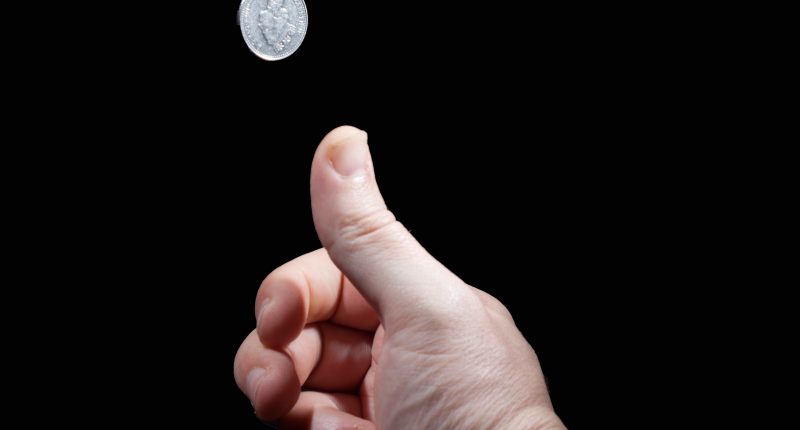THINK again before settling a decision on heads or tails in future.
Experts have revealed that flipping a coin is not quite the 50/50 chance we’ve long believed it to be.
It turns out one side has a slightly greater likelihood of landing face up.
The art of flipping a coin dates back to the Roman Empire.
Back then it was “heads or ships”.
And it’s crucial today for a number of things, even in football with the pre-game coin toss.
Read more about science
A huge group of researchers put it to the test by flipping various coins from across the world a staggering 350,757 times.
Some 48 people flipped coins minted in 46 countries to ensure there was no technique bias.
The results found that a coin is 50.8 per cent likely to land on the same side it started on, reports Phys.org.
It backs up a previous study published in 2007 by Stanford mathematician Persi Diaconis.
Most read in Tech
He claimed that this happens because the coin spends more time on the side it started on while it’s in the air.
“The standard model of coin flipping was extended by Persi Diaconis, who proposed that when people flip an ordinary coin, they introduce a small degree of ‘precession’ or wobble – a change in the direction of the axis of rotation throughout the coin’s trajectory,” the scientists said.
“According to the Diaconis model, precession causes the coin to spend more time in the air with the initial side facing up.
“Consequently, the coin has a higher chance of landing on the same side as it started.”
Find out more about science
Want to know more about the weird and wonderful world of science? From the Moon to the human body, we have you covered…
We pay for your stories! Do you have a story for The Sun Online Tech & Science team? Email us at [email protected]
This post first appeared on Thesun.co.uk









